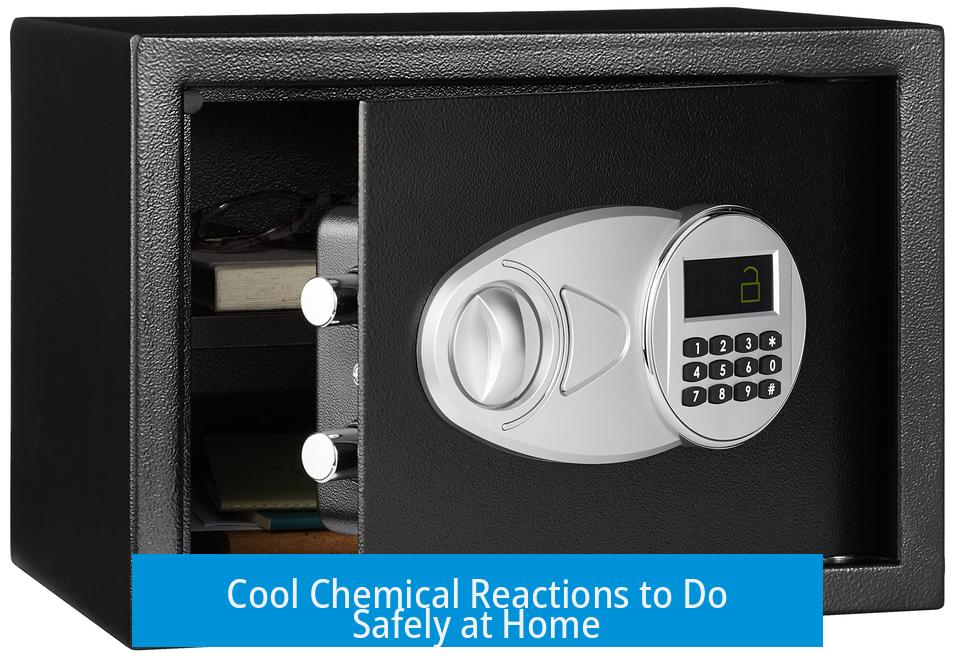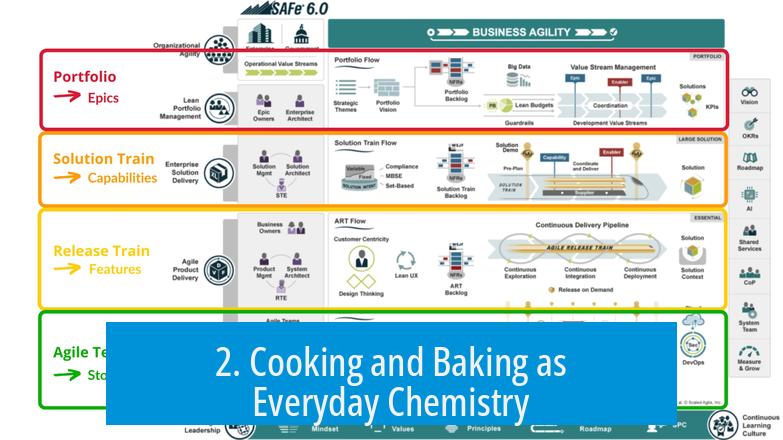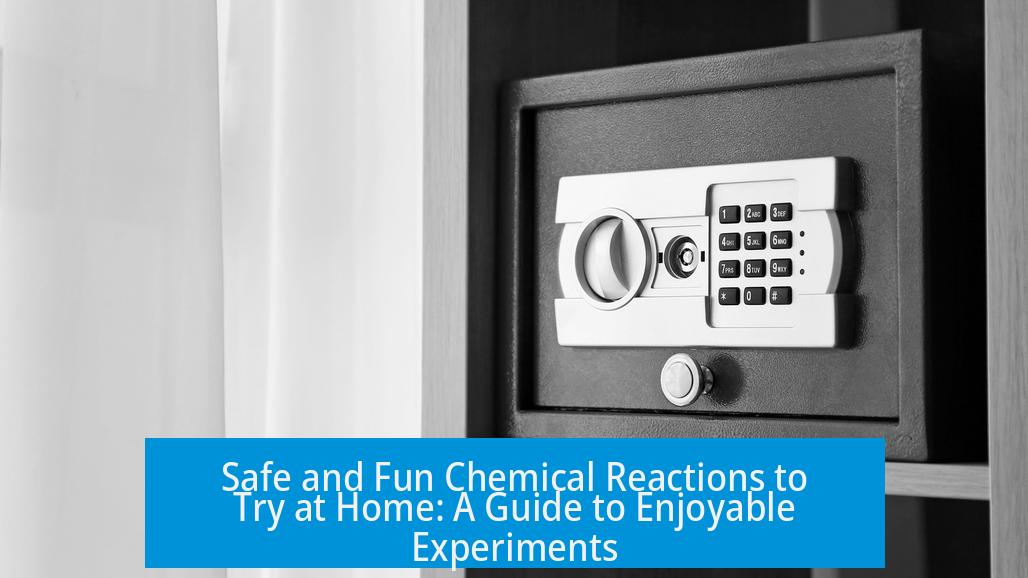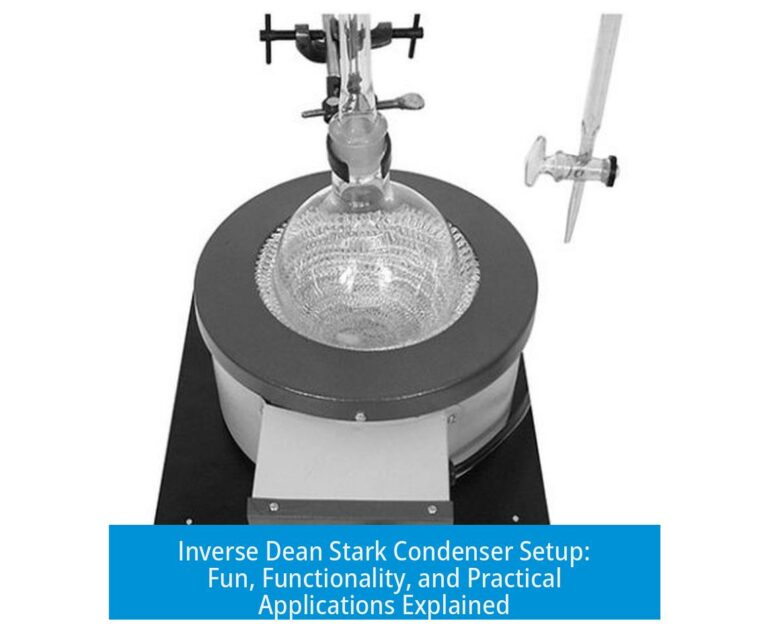Cool Chemical Reactions to Do Safely at Home

Many interesting chemical reactions are possible at home using common household items or easily obtained materials. These experiments demonstrate principles of chemistry while remaining safe and engaging for enthusiasts of all ages. Key examples include natural pH indicators, baking soda volcanoes, metal reactions, color-changing inks, and flame colors. This article outlines several easy-to-do and visually interesting chemical reactions that can be performed responsibly at home.
1. Extracting Natural Indicators from Red Cabbage
Red cabbage contains pigments called anthocyanins, which can act as natural pH indicators. Extracting these pigments is simple and requires only cabbage and hot water.
- Chop red cabbage leaves and boil in water for 10-15 minutes.
- Strain out solid cabbage to obtain the purple liquid.
- Test this liquid with household acidic solutions (like vinegar or lemon juice) and basic solutions (such as baking soda dissolved in water).
The anthocyanins change color according to pH: it turns red in acidic solutions and greenish-yellow in basic ones. This experiment is educational and visually striking, allowing safe exploration of acid-base chemistry.
2. Cooking and Baking as Everyday Chemistry

Many cooking processes involve fascinating chemical changes. These transformations fit well for simple home experiments with edible materials.
- Maillard Reaction: This reaction between amino acids and reducing sugars browns foods and creates new flavors during cooking or baking (e.g., toast or seared meat).
- Pretzel Making with Sodium Hydroxide: Traditional pretzel recipes sometimes use diluted sodium hydroxide to treat the dough surface before baking. This initiates complex reactions that give pretzels their characteristic crust and flavor. This requires careful handling of caustic soda and should be done with supervision.
- Baking Soda and Vinegar Volcano: Combine sodium bicarbonate and vinegar to produce carbon dioxide gas, causing bubbling foam. Adding food coloring enhances the effect. This simple acid-base reaction is a classic visual experiment.
- Baking: Baking involves the transformation of dough and batter’s chemical makeup through heat, creating texture and flavor changes. It can serve as a practical introduction to chemical kinetics and reactions in food chemistry.
3. Extraction of Compounds from Everyday Materials
Isolating natural compounds from household or pharmaceutical materials imparts hands-on experience with chemical separation techniques.
- Extraction of Limonene from Orange Peels: This involves simple distillation of water and orange peels to isolate limonene, a yellow, aromatic compound. Limonene’s strong citrus smell and color make characterization easy and fun.
- Extraction of Acetylsalicylic Acid (ASA) and Hydrolysis: Extracting ASA (aspirin) crystals from aspirin tablets and hydrolyzing them to salicylic acid using water and dilute hydrochloric acid under reflux shows organic chemistry concepts. When cooled slowly, salicylic acid crystallizes into characteristic needle-like structures that are easy to observe.
4. Redox and Metal Chemistry Demonstrations

Simple metal redox reactions produce remarkable visual changes without hazardous chemicals.
- Cleaning Silverware Using Aluminum Foil and Hot Salt Water: Place tarnished silverware in a pan lined with aluminum foil, add hot saltwater, and soak. The black silver sulfide transfers electrons to aluminum, restoring silver’s shine. The foil develops small holes, visual proof of electron transfer. Despite a slight odor, this safe reaction elegantly illustrates redox processes.
- Chemical Gardens: Growing beautiful plant-like structures by immersing metal salt crystals into a water solution of sodium silicate is a classic experiment demonstrating precipitation and crystallization.
- Ink Formation from Iron Ions and Tannic Acid: Mixing a solution of iron salts with tannic acid produces ferrotannate, a dark pigment historically used as ink. It develops color slowly upon air exposure, replicating ancient methods of ink production.
5. Gas and Foam Reactions
Creating gas bubbles or foams from household chemicals offers dramatic, safe visual effects.
- Baking Powder and Lemon Juice to Generate Carbon Dioxide: Adding lemon juice to baking powder produces bubbles and foam. Since CO2 is denser than air, tilting the container lets you pour CO2 over a small flame to extinguish it safely.
- Elephant Toothpaste: This popular demonstration generates copious foam via rapid decomposition of hydrogen peroxide catalyzed by yeast or potassium iodide. Low concentrations of hydrogen peroxide make this safe and spectacular.
6. Colorful Flame Experiments

Heating specific chemical mixtures produces flames of different colors.
- Mixing borax and antifreeze with isopropyl alcohol yields a green-colored flame when ignited. Achieving the right proportions may require trial and error. This experiment demonstrates how metal ions emit characteristic wavelengths when energized.
7. Other Accessible Home Chemistry Activities
- Traffic Light Bottle Redox Experiment: This demonstration exhibits color changes based on oxidation states of compounds, simulating redox processes safely.
- Descaling Coffee Makers: Using vinegar or citric acid to remove mineral build-up involves acid-base chemistry at home.
- Unclogging Drains: Combining household chemicals such as washing soda, baking soda, or enzyme cleaners can clear clogs through chemical or enzymatic action.
- Basic Fire Creation: Creating and controlling fire demonstrates combustion chemistry. Always exercise caution and supervise minors.
8. Safety Considerations and Recommendations
While many home chemical reactions are safe, understanding risks is essential.
- Always use personal protective equipment such as gloves and goggles when handling chemicals.
- Work in well-ventilated areas to avoid inhaling fumes.
- Never mix household cleaners unless confirmed safe, as dangerous gases or reactions can occur.
- Supervise children and novices closely.
- Obtain a reputable chemistry guide for home experiments to learn proper setup, safety protocols, and disposal methods. “Illustrated Guide to Home Chemical Experiments” by Thompson is strongly recommended.
- Consult online tutorials and trusted sources for experiment details before attempting.
Summary of Enjoyable and Safe Home Chemical Reactions
| Experiment | Description | Key Chemicals | Notes |
|---|---|---|---|
| Red Cabbage pH Indicator | Extract anthocyanin pigment to test acids and bases | Red cabbage, water, vinegar, baking soda | Color changes aid understanding of pH |
| Baking Soda and Vinegar Volcano | CO2 gas from acid-base reaction creates foam | Sodium bicarbonate, vinegar | Visual, safe eruption effect |
| Silverware Cleaning with Aluminum | Electron transfer restores silver shine | Aluminum foil, hot saltwater, tarnished silverware | Demonstrates redox chemistry |
| Extraction of Limonene | Distillation isolates fragrant citrus oil | Orange peels, water | Introduces extraction techniques |
| Ferrotannate Ink Formation | Iron-tannic acid reaction forms dark ink pigment | Iron salts, tannic acid (from gallnuts) | Historical chemistry application |
| Elephant Toothpaste | Rapid peroxide decomposition creates foam | Hydrogen peroxide, yeast or iodide catalyst | Fun, safe reaction if low peroxide concentration used |
| Flame Coloration | Metal salts impart characteristic flame colors | Borax, antifreeze, isopropyl alcohol | Variable results; exercise caution |
Final Notes
Chemistry experiments at home can be educational and fun. Several reactions utilize accessible chemicals and provide clear, visual results suitable for learners. Caution and preparation ensure safety while demonstrating key principles like acid-base reactions, redox, extraction, and organic transformations.
Exploring home chemistry fosters curiosity for science and develops practical skills. Using proper instructions and protective measures, many cool chemical reactions become safe ventures in a kitchen or garage lab.
What Are Some Cool Chemical Reactions That I Can Do at Home Safely?
If you’re itching to experience chemistry magic right in your kitchen or garage, there are plenty of safe yet spectacular reactions you can try. From fizzing volcanoes to colorful flames, home chemistry has something for every curious mind without needing a lab coat or fancy equipment.
So, what chemical reactions can you do at home safely that are both fun and educational? Let’s dive into a handful of eye-catching, easy-to-do experiments. They use materials you likely already have around the house or can easily get. Plus, we’ll sprinkle in tips on safety and insights to make you a home chemistry whiz.
1. Natural pH Indicators from Red Cabbage: Chemistry Meets Color!
Start your chemical adventure by experimenting with anthocyanins, pigments found in red cabbage. These compounds change color depending on acidity or alkalinity, turning into a neat visual pH indicator. You can extract them easily by boiling chopped red cabbage in water for 10–15 minutes. The resulting purple juice can reveal hidden acid or base secrets in lemon juice, baking soda solution, or vinegar.
What happens? Adding vinegar turns the indicator pinkish-red, while baking soda turns it greenish-yellow. A simple, inexpensive way to explore acids and bases—though heads up: the cabbage juice smells a bit funky!
2. Food Chemistry: Cooking Is Chemistry on Your Plate
Food is more than just tasty—it’s chemistry in action. Ever notice the golden crust on bread or a pretzel? That’s the Maillard reaction, where sugars and amino acids react under heat to create new flavors and colors. Mischievously, you can even dabble with sodium hydroxide to make authentic pretzels’ characteristic taste and texture. Caution: sodium hydroxide is caustic, so handle carefully or substitute with baking soda for a safer twist.
Speaking of bubbling fun, mix baking soda (sodium bicarbonate) with vinegar (acetic acid). This classic volcano-esque reaction releases carbon dioxide gas (NaHCO3 + CH3COOH → CH3COONa + H2O + CO2↑), producing frothy foam that can be tinted with red food coloring for extra spectacle. It’s a tried-and-true beginner’s favorite!
For those who enjoy more patience and process during cooking, baking is an inviting playground of chemistry. Yeast ferments sugar, releasing carbon dioxide (С6Н12О6 → 2С2Н5ОН + 2СО2↑), causing dough to rise. The changes are tangible, delicious, and teach you about enzymes and fermentation.
3. Extraction Experiments: Get Molecules Out of Everyday Items
Love the smell of oranges? You can extract the fragrant compound limonene from orange peels using simple water distillation. Just boil peels in water and collect the vapor, which condenses limonene with its fresh citrus scent and yellowish color. It’s a neat introduction to distillation and organic compounds.
Feeling ambitious? Aspirin (acetylsalicylic acid, or ASA) can be purified from common tablets and then hydrolyzed under mild acid reflux to form salicylic acid. The acid slowly crystallizes into needle-like shapes, which you can admire before discarding safely. This is chemistry with a medicinal twist, showing purification and hydrolysis in real time.
4. Redox and Metal Chemistry: Silver & Aluminum Foil Drama
Here’s an entertaining and safe homework chemistry “magic trick”: cleaning tarnished silverware in hot salty water combined with aluminum foil. The black tarnish (silver sulfide) reacts with aluminum, which donates electrons, rejuvenating your silverware’s shine. The foil even ends up with tiny holes—proof of electron transfers at work! It’s a quiet redox reaction that’s oddly satisfying.
Chemical gardens are also an accessible experiment showcasing beautiful growing mineral crystals. Plant crystals in a jar with metal salts and watch them sprout colorful “plants.” It’s simple, visually delightful, and safe if handled carefully.
You can take a historical turn by making iron gall ink, which involves iron ions reacting with tannic acids from gallnuts. When the ink contacts air, it forms a dark pigment due to a redox process. Using homemade ink with a fountain pen is not only a nod to chemistry but also to art and history—though don’t use it on irreplaceable documents.
5. Gas and Foam Reactions: Let the Bubbles Blow Your Mind
Ever heard of “elephant toothpaste”? It’s a famous reaction producing a massive foam plume from hydrogen peroxide decomposed by a catalyst like potassium iodide. The foam volume is impressive and looks like toothpaste big enough for an elephant, as the name suggests. For a bubbliest beginner version, try mixing baking powder with lemon juice—this releases CO2 gas that’s heavier than air and can even snuff out a candle flame when poured carefully.
6. Colorful Flames: Chemistry That Lights Up
If you want to dazzle with fire safely outside, try adding borax and antifreeze dissolved in isopropyl alcohol and lighting it. This produces a brilliant green flame thanks to boron compounds. The first tries might take tweaking ingredient ratios, but the hypnotic flame is worth the effort.
7. Everyday Chemistry: Old Tricks with Practical Use
Chemistry isn’t just fun and games; it’s useful too. Have you descale your coffee maker? Vinegar’s acetic acid dissolves mineral build-up efficiently. Unclogging drains with appropriate cleaners (and understanding their chemistry) saves you a plumber’s bill. In both, chemical principles of acid-base reactions or oxidation-reduction come into play.
8. Safety First: Your Best Reaction Yet
Before throwing on goggles and gloves, know your limits. Not every reaction is a home-run on safety grounds. For instance, mixing bleach with other cleaners—though it might create “cool” yellow vapors—is hazardous and never recommended. Watch beginner tutorials and follow guidelines strictly.
Books like Thompson’s Illustrated Guide to Home Chemical Experiments provide superb advice on building a home lab and safety precautions. Experience matters; what’s safe for one person might be risky for another.
Bonus Cool Reactions: From Dancing Gummy Bears to Hot Ice
Dancing gummy bears might sound frivolous but are surprisingly dramatic. When sugar meets molten potassium chlorate, gummy bears combust spectacularly, releasing carbon dioxide and water. (Note: This one is best for supervised environments due to heat involved.)
Hot ice, or supercooled sodium acetate, freezes instantly on contact with a seed crystal, forming a solid resembling ice. Seemingly magic, it’s perfectly safe and fun to pop crystal growth on command. You can even make hand warmers recharge with this reaction.
Why Care About Home Chemistry?
Experimenting with these practical reactions introduces core chemical principles: acid-base balance, redox reactions, combustion, crystallization, and molecular extraction. Hands-on chemistry fosters curiosity, critical thinking, and an appreciation for the science in everyday life. Plus, it’s downright fun.
Imagine impressing friends by lighting green flames, showing them how cabbage juice reveals if a juice is acidic, or explaining how cleaning silver is an electron exchange party. These are not just party tricks—they’re everyday chemistry adventures.
Summary Table: Top 5 Safe, Cool Chemical Reactions for Home
| Reaction | Materials Needed | Why It’s Cool |
|---|---|---|
| Red Cabbage pH Indicator | Red cabbage, water, acids/bases (vinegar, baking soda) | Shows color shifts with acids and alkalis |
| Baking Soda & Vinegar Volcano | Baking soda, vinegar, food coloring (optional) | Foaming eruption producing CO2 gas |
| Cleaning Silver with Aluminum Foil | Silverware, aluminum foil, hot salty water | Observe redox reaction restoring silver shine |
| Elephant Toothpaste | Hydrogen peroxide, potassium iodide/catalyst | Generates steaming, voluminous foam |
| Flame Coloring | Borax, antifreeze, isopropyl alcohol | Produces vibrant green flames |
Final Tips for Successful and Safe Home Chemistry
- Do your research before starting any experiment.
- Wear safety goggles and gloves when possible.
- Work in a well-ventilated area or outdoors for flame or gas experiments.
- Keep a fire extinguisher or water nearby when playing with heat or flames.
- Dispose of chemicals responsibly—don’t dump strange mixtures down the drain.
- Start simple and build experience before trying anything complex or hazardous.
With these reactions and guidelines, you’re ready to embark on your home chemistry journey. By turning ordinary household items into extraordinary scientific phenomena, you’ll marvel at the unseen processes shaping our world. Who knew science could be this colorful, bubbly, and downright cool?
What is a simple natural pH indicator experiment I can try at home?
Extract anthocyanins from red cabbage by boiling it in water. Use the liquid to test acids and bases. The color changes show the pH level, turning pink in acids and green or blue in bases.
How can I safely make a baking soda and vinegar volcano?
Mix baking soda with vinegar in a container. Add red food coloring for a lava effect. The reaction produces carbon dioxide gas, causing fizz and foam.
Is it possible to extract perfume-like compounds at home?
Yes, you can extract limonene from orange peels using simple distillation. The yellow oil has a distinct citrus smell and is easy to collect with basic kitchen tools.
How does cleaning silverware with aluminum foil work chemically?
Place silverware in hot salt water with aluminum foil. The aluminum donates electrons to the silver sulfide tarnish, turning it back to shiny silver. This is a redox reaction.
What is a fun and safe gas experiment for kids?
Mix baking powder and lemon juice. The reaction releases carbon dioxide gas that makes foam. You can pour the CO2 over a candle to see it extinguish since CO2 is heavier than air.





Leave a Comment